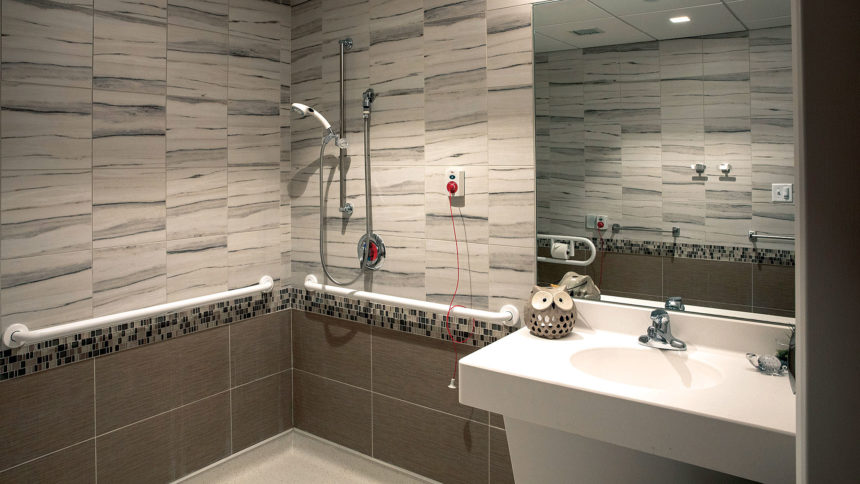
Nursing homes are understandably eager to return to normal. This includes enticing COVID-weary families back to places of comfort and excellent care. In any given facility, a natural place to begin is the bathing area.
Studies have shown that prospective residents and their families want to be in a safe, protected and supportive environment. Offering better bathing and personal hygiene experiences is one way to deliver on those expectations, experts explain here.
1. “The driver should be patient satisfaction and focusing on patient-centered care,” stressed Patricia Howell, RN, BSN, WCC, CFCS, clinical support manager for McKesson Medical-Surgical. Of course, other important considerations include regulatory compliance, updating outdated and worn-out bathing areas and the need to stay fresh in a competitive market, she added.
To Mary Madison, RN, RAC-CT, CDP, a long-term care/senior living clinical consultant for Briggs Healthcare, bath upgrades are largely overdue in many communities.
“If anything is responsible for such motivation, it should be the past two-plus years of dealing with the pandemic and all things infection prevention and control,” she said. “Bathing was most certainly a challenge.”
2. To ensure the most success in any bathing-related upgrades, do your homework.
“To re-invigorate the bathing process to accommodate residents and utilize the hydrotherapeutic benefits of spa bathing, several things have to happen,” said Todd Binsfeld, chief growth officer of Apollo Corp.
They should include inspecting weaknesses in all plumbing connections, ensuring any fast reservoirs have been adequately maintained, replacing worn-out seals and addressing weaknesses in purification systems.
Above all else, make a thorough list of any new infection control rules to ensure they will be accounted for in your renovations, and address needs of both bariatric and frail elderly residents, Madison cautioned. Ensuring your residents’ safety, comfort and dignity are paramount.
“Bath time shouldn’t resemble an automated car wash,” she added. “Transfer chairs to and from the resident room. Stop wrapping bath blankets around residents for their trips to the shower room. Allow space in the bathing/shower area to undress and redress.” Ensure you address any fall risks with non-slip surfaces and shower shoes. And avoid mounted lifts above tubs, experts advised.
3. Consider various options when funds are limited.
“The biggest bangs for the buck certainly include the spa model, with its soothing music, pleasant scents, warm towels — towel warmers are a great investment in LTC bathing areas — as well as soft fluffy towels,” said Madison. “Most folks appreciate those amenities.”
Howell stressed the tangible and at times subliminal benefits that even the simplest of tweaks can bring to what should be a regenerative and healthful experience.
In an article titled “The Substitutability of Physical and Social Warmth in Daily Life” in the journal Emotion, for example, researchers demonstrated that people who have high levels of loneliness feel higher levels in social warmth after taking warm baths or showers.
“My takeaway from this article is that there is a tendency for people living in nursing homes to be lonely, and therefore providing them with a warm bathing environment can help increase not just their physical warmth but also their social warmth,” said Howell. “You don’t necessarily need a lot of money to have a big impact on patient satisfaction.”
Some low-cost ideas include towel warmers, high-quality towels, quick coverups upon exiting showers or tubs, updated “non-institutional” wall and floor accents, decorative room dividers, privacy curtains, soft music and addressing unpleasant smells.
4. Pursue larger upgrades if budget allows.
Many elderly residents are big fans of “walk-in” tubs because of the comfort and ease they provide over conventional, low-lying bathtubs. Binsfeld suggested such considerations as rapid fill and drain models to ensure the resident isn’t left shivering before or after her bath.
When larger scale remodeling or renovations are needed for a bathing area, Howell advised creating an “environmental task force” including direct care givers, residents and family members.
“Perform an assessment of features in the bathroom environment and make a wish list of the luxuries they would like to include,” she recommended.
From the September 2022 Issue of McKnight's Long-Term Care News



